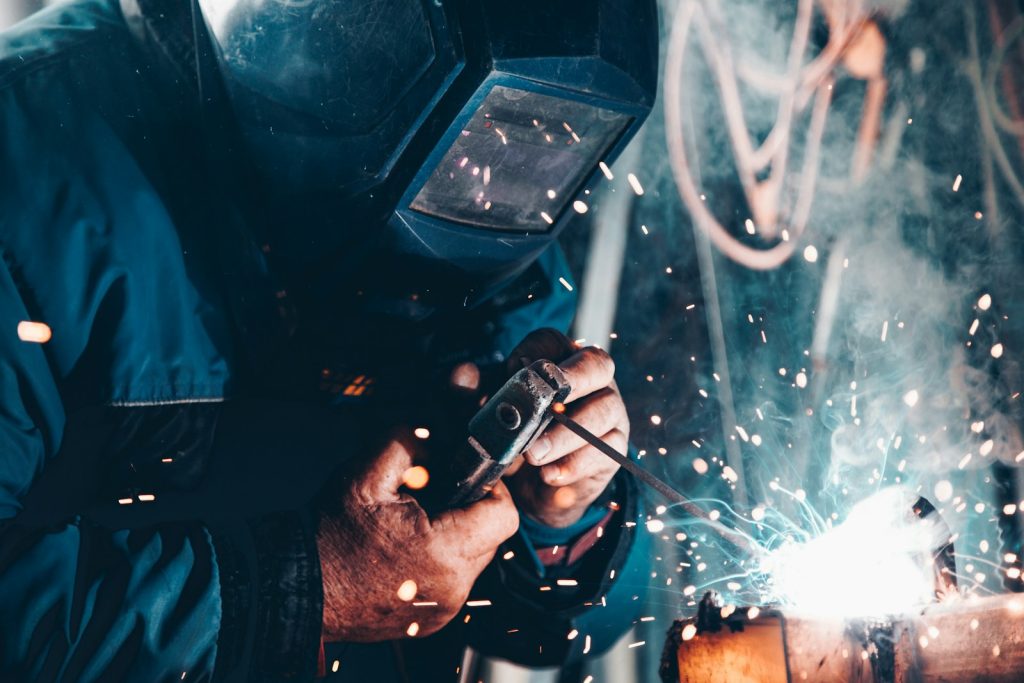Welding caps are an essential part of any welder’s gear, providing not only protection but also comfort during long hours of work. In the demanding environment of welding, where sparks fly and heat soars, the durability of your welding cap can significantly affect your overall work experience. As such, it’s crucial to know how to extend the life of your welding cap, ensuring it provides lasting protection and comfort. This article, tailored for the esteemed clients of Metro Steel, delves into practical tips and tricks to maximise the lifespan of your welding cap.
Understanding Your Welding Cap
Before diving into maintenance tips, it’s important to understand the features of a high-quality welding cap. Typically, these caps are made from flame-resistant fabrics that withstand the harsh conditions of welding. They come in various designs, with some covering just the top of the head and others providing additional neck and ear coverage for extra protection.
Choosing the Right Welding Cap
Selecting the Right Material
When it comes to welding caps, the material plays a pivotal role in both protection and longevity. A 100% cotton cap is often recommended for its breathability and comfort during long welding sessions. However, for environments where sparks and slag are a constant threat, a cotton blend with flame-resistant properties becomes indispensable. These materials are engineered to resist ignition, extinguish flames quickly, and minimise the extent of burns. Brands like Metro Steel advocate for materials that meet or exceed safety standards, ensuring welders are not just comfortable but securely protected.
Proper Fit
The fit of your welding cap is equally critical. A cap that’s too tight can cause discomfort and distraction, while a loose cap might not provide adequate coverage or protection against sparks and UV radiation. The ideal cap fits snugly around the circumference of your head without pinching or shifting, covering your ears and hairline completely. This snug fit not only maximises protection but also minimises the cap’s movement, reducing the need for constant readjustments and thereby reducing wear and tear.
Regular Maintenance
Cleaning
Regular cleaning is not just about hygiene; it’s about maintaining the integrity of the cap’s flame-resistant properties. Washing your welding cap in a gentle cycle with mild detergent helps remove contaminants that could potentially compromise the fabric’s protective qualities. It’s crucial to follow the manufacturer’s instructions to avoid any damage to the material. Avoiding harsh chemicals like bleach and fabric softeners is essential, as these can break down the flame resistance, rendering the cap less effective.
Drying
The drying process is just as important as cleaning. High temperatures can be detrimental to the cap’s fabric, causing it to shrink or become brittle over time. Air drying is the best method to preserve the cap’s shape and material integrity. If using a dryer, selecting a low heat setting is crucial to avoid any damage. This careful approach to drying not only helps maintain the cap’s size and fit but also extends its usable life.
Storage and Handling
Proper Storage
Storing your welding cap properly can significantly extend its lifespan. Exposure to direct sunlight or humid conditions can fade and weaken the fabric, making it more susceptible to damage during use. A cool, dry storage area prevents the degradation of the material, ensuring the cap remains in good condition.
Avoid Folding
Folding or creasing the cap can lead to fabric wear and tear, especially along the fold lines where material strength can be compromised over time. Hanging the cap or laying it flat for storage is advisable to maintain its shape and structural integrity.
Periodic Inspections
Regular inspections of your welding cap for signs of wear and tear are crucial for safety and longevity. Thinning fabric, holes, or frayed edges can compromise protection, making early detection vital. Such inspections can help identify issues before they become significant problems, allowing for timely repairs or replacement.
Repair and Replacement
DIY Repairs
For minor damages, such as small holes or tears, a DIY repair with flame-resistant thread can be a quick fix that extends the cap’s life. This approach is practical for maintaining the cap’s protective qualities without the need for immediate replacement.
Knowing When to Replace
Despite the best care and maintenance, every welding cap will reach the end of its useful life. Recognizing when replacement is necessary is crucial. A cap that shows significant wear, has holes, or where the fabric has become thin, compromises safety and must be replaced. Regular assessment and adherence to safety standards are essential in determining the right time for a new cap.
Adopting these expanded practices for selecting, maintaining, and handling your welding cap can significantly extend its life while ensuring maximum protection and comfort. It’s about investing in your safety and enhancing your welding experience with the right care and attention to detail.
Customisation and Comfort
Padding: For added comfort, consider adding a thin layer of flame-resistant padding inside your cap. This can also help absorb sweat during long welding sessions.
Personalisation: Personalising your cap with patches or embroidery can make it more enjoyable to wear. Just ensure any additions are made from flame-resistant materials.
Advanced Tips for Professionals
Rotation: If you weld regularly, consider having a rotation of caps. This allows each cap to rest and reduces wear and tear from daily use.
Specialised Caps for Different Conditions: Depending on your welding environment, you might benefit from having different caps for different conditions—lighter materials for hot conditions and caps with extra coverage for higher risk tasks.
Conclusion
Your welding cap is not just a part of your uniform; it’s a crucial tool that protects you while you work. By selecting the right cap, performing regular maintenance, and knowing when it’s time for a repair or replacement, you can significantly extend the life of your welding cap. These tips and tricks are not only practical but also easy to implement, ensuring your welding cap remains a reliable part of your gear for years to come. Remember, a well-maintained welding cap not only offers better protection but also contributes to a more comfortable and productive welding experience. For those in the Metro Steel community, adopting these practices means not only maximising your investment in your welding cap but also upholding the high standards of safety and efficiency that are synonymous with our industry.
 Talk to an Expert (07) 3204 1000
Talk to an Expert (07) 3204 1000 Working Hours - Mon – Fri 7:00 AM – 4:00 PM
Working Hours - Mon – Fri 7:00 AM – 4:00 PM
